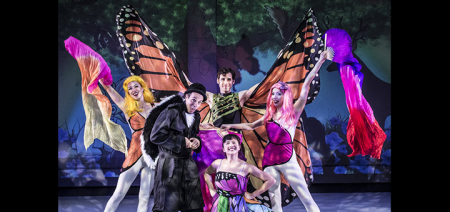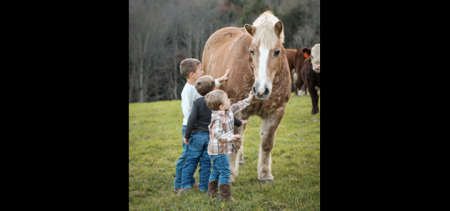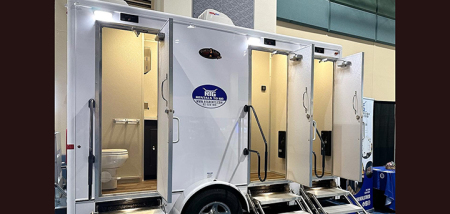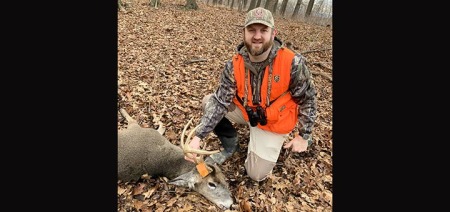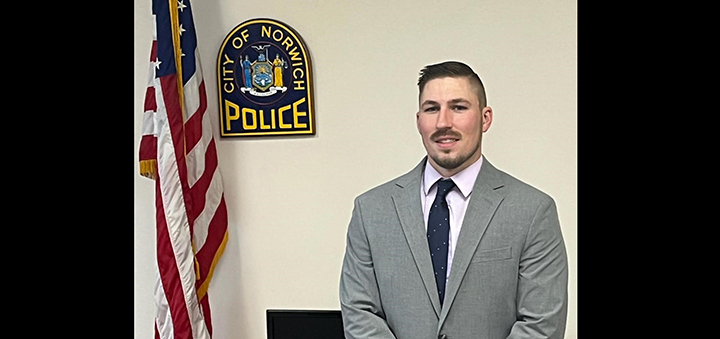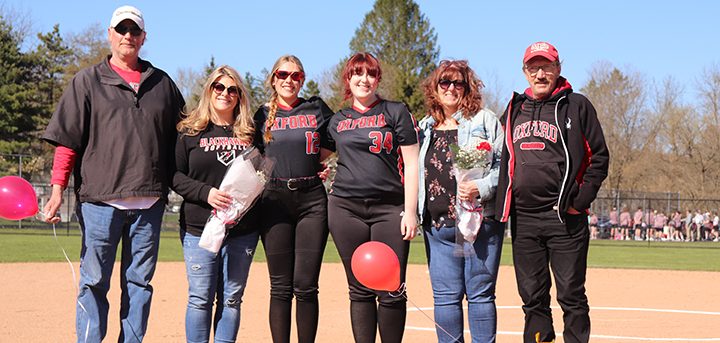Bainbridge Wildlife Rehabilitator Offers Assistance To Residents
Published:
March 1st, 2022
By:
Sarah Genter
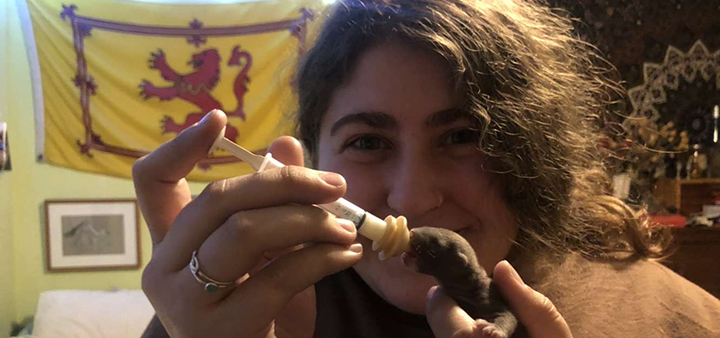 Gina Haddad feeding an American Mink kit that was being rehabilitated by her mentor, Anna Garcia Lewellyn. (Submitted photo)
Gina Haddad feeding an American Mink kit that was being rehabilitated by her mentor, Anna Garcia Lewellyn. (Submitted photo)
CHENANGO COUNTY — With wildlife baby season nearly here, Bainbridge-based wildlife rehabilitator Gina Haddad took to social media to alert Chenango County residents of the expected increase in baby animals, and what she can do to help.
Haddad was mentored by her close friend Anna Garcia Lewellyn on wildlife rehabilitation and holds a New York State Department of Environmental Conservation (DEC) Class I General Wildlife Rehabilitator License, and is currently studying Veterinary Science Technology at SUNY Delhi.
As a licensed wildlife rehabilitator, Haddad is able to take in small animals such as rabbits, possums, birds, and squirrels that are in need of care.
"I can take in animals like possums and squirrels, stuff like that," Haddad explained. "Small mammals as long as they cannot contract rabies, because that is considered a Rabies Vector License and I would have to have additional training for that, which I plan on getting but I have to wait a couple years until I’m certified to be able to do that."
When caring for a wild animal, her goal is to get the animals fed, stabilized, and comfortable enough to be released. However, her licensing does not allow for medical practice on the animals. In the case that veterinary attention is needed, Haddad said she networks with area vets to provide medical treatment.
Should any residents of Chenango County or the surrounding areas find an animal that shows signs of being sick, injured, or in the case of babies, abandoned, Haddad encourages them to contact her at 607-226-1510 or at ghaddad013@gmail.com, or contact another licensed wildlife rehabilitator.
"When it comes to super young animals, if they see a baby out of the nest it’s really important that they observe and make sure that the animal is actually injured, and not potentially like mom’s maybe teaching the baby birds how to fly," she explained. "A lot of people call about fawns especially when mom beds them down for the day ... Unless the deer has been bedded for 24 hours or more, mom’s coming back. So I think that that’s really important, to just monitor and make sure that there is actually a reason to believe that the baby is injured or orphaned instead of just jumping into trying to help, because if you don’t know what you’re doing sometimes you can cause more harm than good."
"From there, if you do feel that there is an issue, definitely contact a rehabber and have them come out and look," she added. "If you don’t feel comfortable putting a baby back in its nest then one of us could, and we can try and see if the baby will stay in the nest. And if not, then we’ll be able to take it from there."
She said the overall goal is to release the animals back into the wild and avoid them becoming too domesticated and dependent on humans.
"The end goal is to be able to release them and have them have no attachment. Which is hard with babies because if you’re the first thing that they see, you’re mom and they rely on you for feeding and everything. So it can be kind of difficult," said Haddad. "But it is definitely the end goal to be able to release them and have them not want to be around humans, because as we all know they can be a menace or it can end up costing them their life if they’re too close to people."
According to the New York State DEC, licensed wildlife rehabilitators are the only people legally allowed to care for sick or injured wildlife, as they have the expertise needed to provide proper care.
The New York State DEC website states, "Inappropriate care given to young wildlife often results in abnormal attachment to humans. After release, some return to places where people live, only to be attacked by domestic animals or to be hit by cars. Some become nuisances getting into stored food, trash cans, or dwellings. And some may be thrust as unwelcome intruders into the home range of another member of their species."
In addition to rehabilitating wildlife, Haddad and her roommate also offer cat and kitten rescue. According to Haddad, the pair have been able to rescue and re-home approximately 50 kittens since October of 2021.
"We do cat and kitten rescue, and with baby season coming up there’s going to be a lot of little kittens that are abandoned, or mom gets hit in the road and people find young neonates," she said. "So I will also take in just about any domesticated bottle baby that I can if it means that I can help and then adopt them out."
The wildlife rehabilitation Haddad provides is entirely volunteer and donation based. She said donations of items and funds are always welcome, and everything donated goes directly to the care of the animals.
"If people wanted to make a direct donation to me, they could contact me via my phone number or my email. I could always use old towels, or if you have an old cage that you had your rabbit in or something I could always use that to be able to help animals," said Haddad.
She credits her mentor for teaching her the ropes of wildlife rehabilitation, but also her parents and boyfriend for providing the space needed to care for the animals.
"I want to thank my mentor, Anna Garcia Lewellyn for introducing me to this amazing program and teaching me so much," said Haddad. "I would also like to thank my amazing family and my boyfriend for allowing me to use their homes to do rehab, and always supporting whatever I do."
To anyone interested in helping animals or learning how to rehabilitate wildlife, Haddad recommends finding a mentor to make the learning process easier. She encourages more people to get involved in rehabilitation work, as it's always needed and always worth it.
"You don’t have to go to college and there’s no schooling for it, but if you can find a mentor to kind of help guide you in your first year, or your first two years of rehabbing, before you really get in and involved and do it by yourself, it’s a lot easier," she said. "I would probably be pretty lost, even with my background, I would still be pretty lost doing this."
"Try and stay educated and see if you’d be able to get into it yourself, because it’s always necessary," Haddad continued. "I think that if you have the opportunity or you have that passion you should just jump into it and go for it, because we could always use more people. And you’re not only helping yourself, you’re helping animals who don’t have a voice for themselves."
Author: Sarah Genter - More From This Author
Comments
